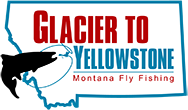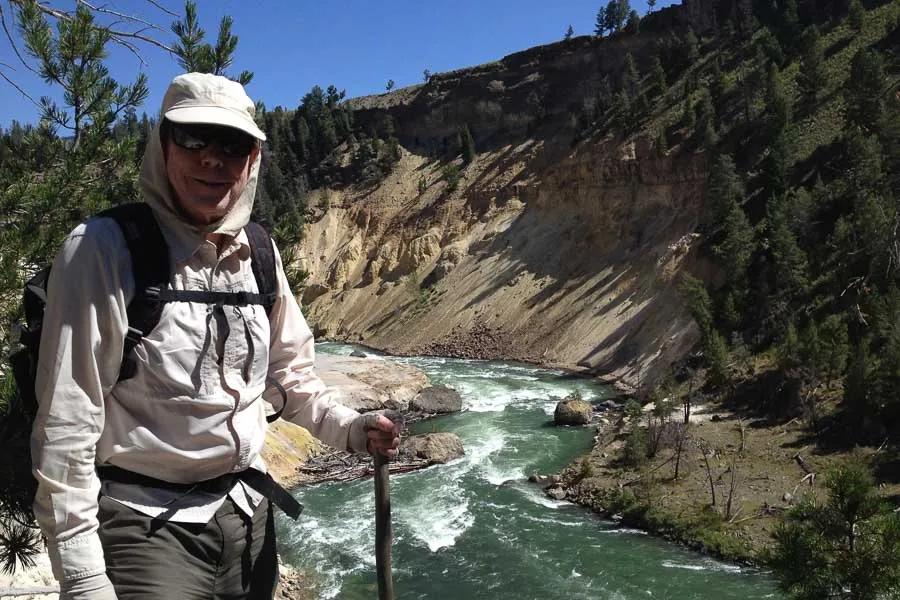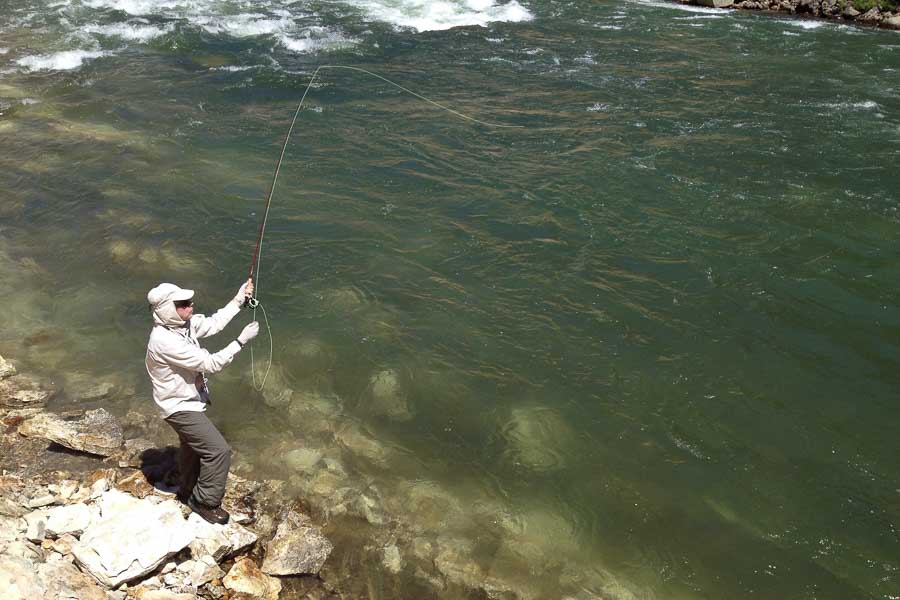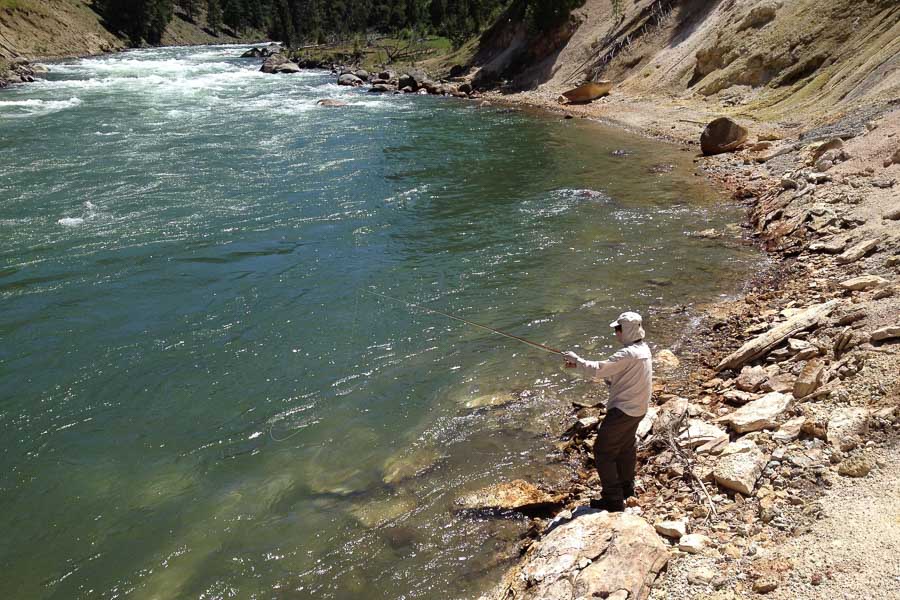The Park’s namesake river, the Yellowstone is among the best fisheries found in Yellowstone National Park. Throughout its length, the river is a bastion for the native Yellowstone Cutthroat Trout. While the fishery has been hurt by the introduction of Lake Trout into Yellowstone Lake, the river still offers some excellent fishing. The river traverses the entire park from south to north and varies considerably throughout its length.
Thorofare Region
The Yellowstone River begins as a small creek high in the Teton Wilderness area south of Yellowstone National Park. The stretch from the headwaters to Yellowstone Lake flow through some of the most remote country in the Lower 48. Much of the river is 20-30 miles by trail from the nearest road. This stretch of river acts as a nursery and spawning area for Yellowstone Lake. This used to be a very productive fishery, but Lake Trout have reduced the population of Cutthroats to the point that very few enter to the river to spawn any longer. Given its remote location and fragile fishery, it’s best to leave this section of river alone until the Cutthroat population can recover.
Yellowstone Lake to Yellowstone Falls
The Yellowstone exits the lake as a very large river, and is quite powerful in spite of the low gradient and meadow surroundings. This stretch too has been damaged significantly by Lake Trout, but has recovered to the point that makes fishing viable, though nowhere close to its former glory. The fishing season begins here on July 15th, and be sure to study the Park regulations thoroughly, as there are a number of fishing closures in this stretch.
Although fish numbers are low here, the fish are quite large, averaging in excess of 18”. This is a spot and stalk game, as blind fishing is typically unproductive given the size of the river and low trout population. The fishing is best during insect hatches that bring trout to the surface. Pale Morning Duns are the primary hatch, but be prepared for various Drakes as well. There is typically a few weeks of good fishing after the river opens, but it quickly dies out as hatches wane and the fish return to Yellowstone Lake.
Grand and Black Canyons of the Yellowstone
Below the famous falls, the Yellowstone is found within a canyon for its remaining journey through the park. The fish below the falls are cut off from Yellowstone Lake and the Lake Trout, so this section of river is completely unaffected by the Lake Trout debacle. This is a big, brawling, freestone river. Wading is difficult and often unnecessary, as most fish hold very close to shore. Almost all of the Canyon section is accessible only by hiking. Popular trailheads are located around Canyon, Tower, Roosevelt, and Gardiner. The river can be reached in less than a mile or over 5 miles, so research and plan accordingly.
The fishing here begins at the end of runoff, typically in late June or early July. The early part of the season sees very good hatches of Salmonflys and Golden Stones. In August, terrestrial insects such as Ants, Grasshoppers, and Beatles are the most important trout food, although some Caddis hatches can be found in the evenings. In September, terrestrials are still important on warm days, and good hatches of Blue Winged Olives will be encountered on cloudy days. Streamer fishing can be very productive during non-hatch periods. The season here will come to close sometime in early October as cold weather shuts down the fishing.
Contact Montana Angler Fly Fishing for guided fly fishing trips in Yellowstone National Park




















